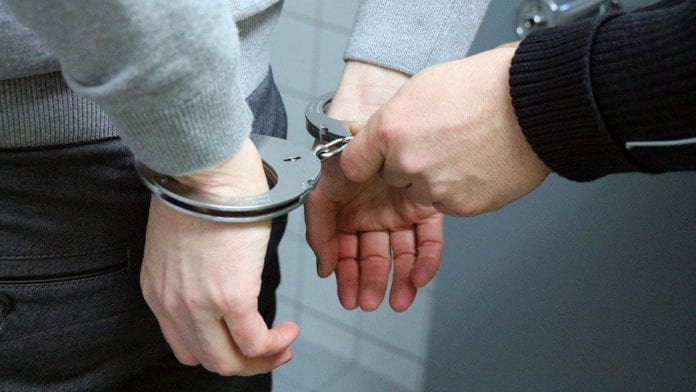Following on from yesterday’s ruling in the high-profile Belfast rape trial – in which four men were cleared of all charges relating to the alleged rape of a 19-year-old woman – it seems that similar results are the norm in sexual offence cases in Ireland.
Statistics from the Central Statistics Office and the Irish Courts system show that 90% of recorded rapes and sexual assaults end in something other than a conviction.
Although sentences for rape are getting longer, careful analysis reveals a very low proportion of alleged sexual offenders make it to the point of conviction in order to be sentenced.
There is a large discrepancy between incidents recorded by the Gardaí and resolved court cases.
There were 2,110 reported rapes and sexual assaults in Ireland in 2015 (the most recent year for which court data is available).
Of these, 1,479 found their way to the Central Criminal Court, and just over a third (750) were actually resolved. A few may have gone to the Circuit Court (in 2008, 134 sexual offences were dealt with there), but even adding 150 court cases leaves 1,210 reported rapes and sexual assaults that weren’t resolved in court.
And these numbers aren’t unusual; similar discrepancies pop up year after year. But this gap is only present in sexual offences.
By contrast, in 2015 the Central Criminal Court resolved 31 murder cases with only 29 offences recorded that year (some resolved cases were likely from the previous year), and 7 manslaughter cases with only 4 offences recorded that year.
There is a huge backlog of unresolved rapes that simply doesn’t exist for other types of violent crime.
This may be in part because of lengthy delays in prosecuting rapes, but should be explored further.
Sheer volume could also be a factor. In 2015, there were 839 cases of violent crimes resolved in the Central Criminal Court, of which 750 (89%) were rapes and sexual assaults.
The justice system may be poorly equipped for such a large number of these incidents.
Aside from the huge difference in volume between sexual offences and other violent crimes, the wide discrepancy between incoming and resolved offences is unusual —
all crimes other than rape and sexual assault have very small gaps between the two.
But the story gets even murkier following the 750 resolved cases through the Central Criminal Court.
Central Criminal Court Cases
“Resolved” means all cases that ended, whether or not they resulted in a conviction.
This includes cases where there is not enough evidence to prosecute (nolle prosecui), or even cases where the accused died during proceedings.
In 2015, rape and sexual assaults were the least likely of all violent crimes in the Central Criminal Court to go to trial.
Fewer than half of rape cases and only 40 percent of sexual assaults resulted in a trial, compared to nearly three quarters of murder cases.
And this wasn’t because more defendants of these cases pled guilty — sexual offences are towards the lower end of the pack for guilty pleas as well.
Rather, rape and sexual assault offences are in the top three for nolle prosequi cases — those which were dropped by the prosecution — and are the top two for cases that are taken into consideration (offences that are not prosecuted separately but added to the sentencing for a different offence).
They are also the top cases in which the accused died before going to trial.
This could be due to long delays in reporting offences caused by a cultural environment where admitting sexual abuse is often considered shameful or taboo.
Nearly one in five sexual assault cases ended because the accused died prematurely — six times the number of murder defendants who died during court proceedings.
These somewhat unusual endings for rape and sexual assault cases mean that fewer of those cases go to trial.
Trial Outcomes
But when they do go to trial, what happens?
Sexual assaults have one of the highest conviction rates at 78.5 percent, while rape is middle-of-the-road at 54.8 percent.
This means that only around one out of every two people on trial for rape gets convicted.
Most of the rest of the defendants in rape cases are acquitted or their offence is taken into consideration.
In fact, rapes and sexual assaults make up two of only three types of violent crimes that were taken into consideration in 2015.
Going back to all rape cases resolved in court – including the ones that went to trial – the conviction rate is 25 percent.
So of all the people who end up in court for rape, only one in four gets convicted.
This is less than half the conviction rate for murders and manslaughters, and even lower than the rate for sexual assaults (31 percent).
And once convicted, sentencing is confusing at best, with partial and full suspensions of imprisonment that may soon become irrelevant.
Rape is the only offence for which a sentence was fully suspended – and the second highest in partially suspended imprisonments.
And although the maximum penalty for rape in Ireland is life imprisonment, none of the sentences handed out in 2015 were for life.
Yearly Trends
So how does 2015 compare with other years?
In terms of case resolution, there was a marked increase in the number of rape cases going to trial in 2014, as well as a large drop in the number of cases taken into consideration.
In 2013 there was a steep decline in the number of guilty pleas – perhaps due to stricter sentencing. And the slow rise in nolle prosequi cases had dipped by 2015.
Overall it seems that the proportion of rape cases being prosecuted is gradually climbing.
Rape trial outcomes have also changed over the last couple of years, with a 75 percent acquittal rate in 2013 dropping to 42 percent in 2015.
The conviction rate has also steadily increased, from only 17 percent in 2013 to 54 percent in 2015.
So although the general trend leans in favour of the courts taking a more serious view of rape cases, it may take a while to see the results.
Ultimately, out of the 2,110 recorded rapes and sexual assaults in 2015, only 10% of alleged offenders will see any jail time.
This is a lot of data to absorb.
But looking at the numbers can help us understand why decisions like the one made in Belfast yesterday are regular occurrences – and whether we as a society can live with that.













